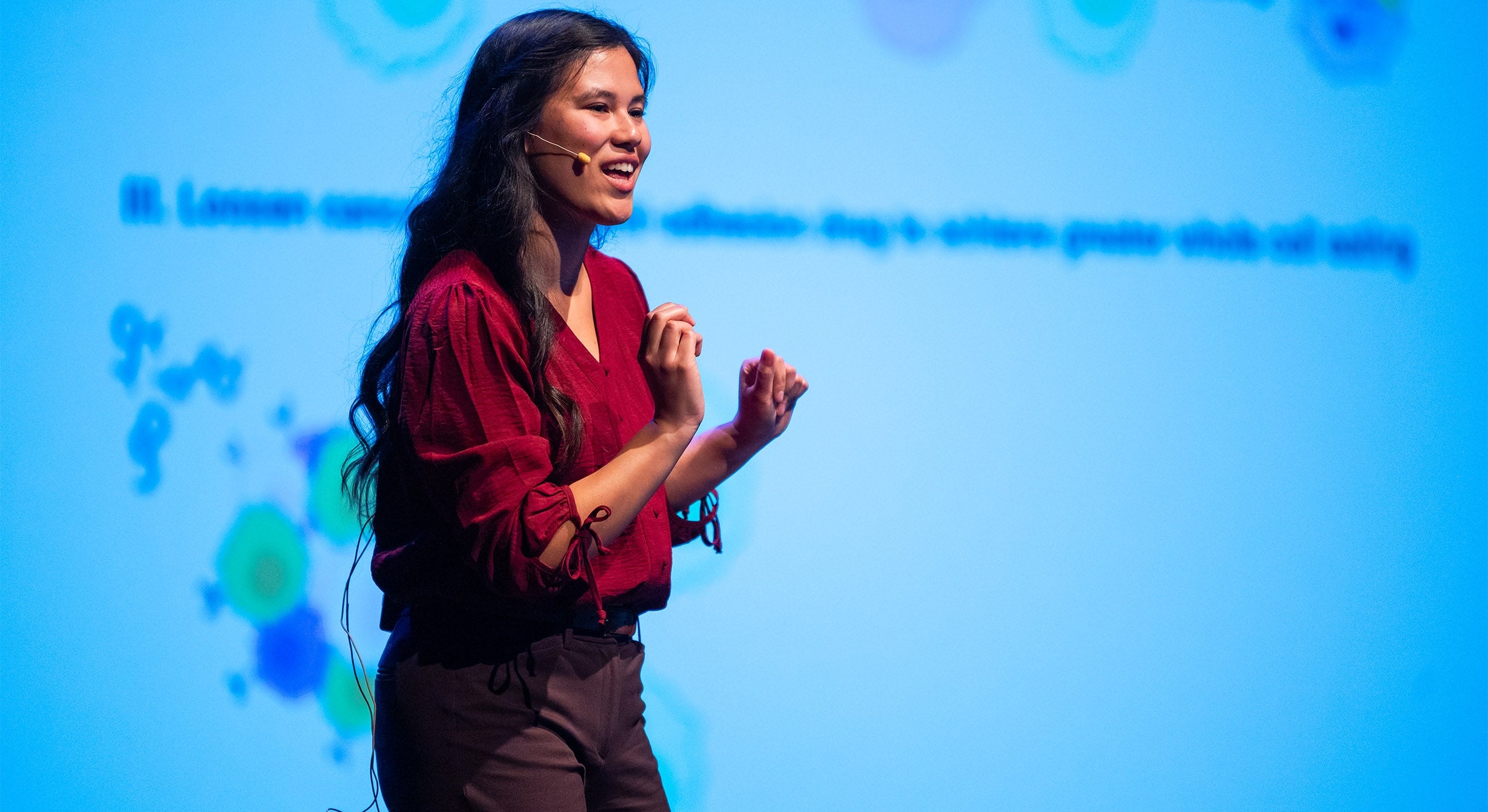Achieving Greatness
Many California high school students don’t realize their dream of a university education is only as far as their local University of California campus. Representatives from UC and UC Santa Barbara brought this fact to students at Carpinteria High School Wednesday, Oct. 28, as part of the annual systemwide outreach initiative called Achieve UC.
The UCSB visit was organized by the campus's Office of Education Partnership's Math Engineering Science Achievement program (MESA) and Early Academic Outreach Program (EAOP), with support from the UC Office of the President's Office of Diversity and Engagement. Carpinteria High School was chosen in part for Achieve UC to enhance the UCSB-run MESA and EAOP programs on the high school campus. UCSB’s Office of Education Partnerships and EAOP provide services to a significant number of low-income and/or first generation students, as well as students from groups that have been historically underrepresented in colleges and universities.
“Don’t let others define who you are,” Gerardo Aldana, associate dean of UCSB’s College of Creative Studies, said in his keynote speech. “You need to find out who you are for yourselves.” As a kid growing up in the small seaside city of Escondido, California, Aldana became aware of the stereotypes imposed upon Hispanic and Latino youth — social dynamics he managed to overcome through education and the opportunities it brings. UCSB’s Office of Education Partnerships and EAOP provide services to a significant number of low-income and/or first generation students, as well as students from groups that have been historically underrepresented in colleges and universities.
While the half-day event provided important information to all prospective UC students, it is geared particularly toward students who otherwise might not consider the possibility of a college degree. For them, it may seem an unattainable goal, perhaps because of financial constraints, or because no one in their families had gone on to college.
To prove that a UC education really is within reach and to encourage students to pursue their higher education goals, presenters were on hand to break down the often- daunting process of applying for admission and financial aid.
The key? Start early and work hard.
“Start keeping a list of all your activities,” advised Cuca Acosta, associate director of school services in UCSB’s Office of Admissions. She shared with the students what they can do now to make the application process easier when the time comes. In addition to non-negotiable requirements — at least one successful college entrance examination (SAT or ACT) and a minimum 3.0 grade-point average — other, less tangible elements will also be considered by admissions officers, Acosta said. Among them are community service, extracurricular activities and work experience.
Following the presentations, which were interspersed with raffles for the students, breakout sessions were held for the different grade levels that covered topics such as education abroad, choosing a major and the real deal on debt. With appropriate preparation, the students were told, they can minimize their education expenses through a variety of grant and scholarship programs. Additionally, as part of the UC Blue & Gold Opportunity Plan, qualifying students from households earning less than $80,000 will have no tuition expenses.
Now in its fourth year, Achieve UC has resulted in an increased number of applications at all nine undergraduate UC campuses. UCSB in particular has made great strides in achieving economic diversity. Up to 44 percent of its incoming freshmen are first-generation college students. Earlier this year, the campus was designated a Hispanic- Serving Institution by the Hispanic Association of Colleges & Universities.
In addition, UCSB was selected by the U.S. Department of Education to receive a $2.6 million grant to continue assisting first-generation college students through the critical first year. The grant was awarded under the education department’s Developing Hispanic-Serving Institutions Program, which assists Hispanic-Serving Institutions in expanding educational opportunities for Hispanic students.
For Ray Vazquez, Carpinteria High School assistant principal, the event helps him and others in his line of work do something important: keep alive their students’ hopes for higher education.
“It’s our jobs as teachers and administrators to keep them hopeful, keep them dreaming, keep them thinking that going to college can be a reality,” he said. Young students often don’t have the habit yet of thinking far into their future and can be daunted by even relatively minor setbacks or fail to see the long-term fruits of their labor, he said.
“We’re cheerleaders,” he added. “And we have to help them see what they do now can have an impact on their future.”








